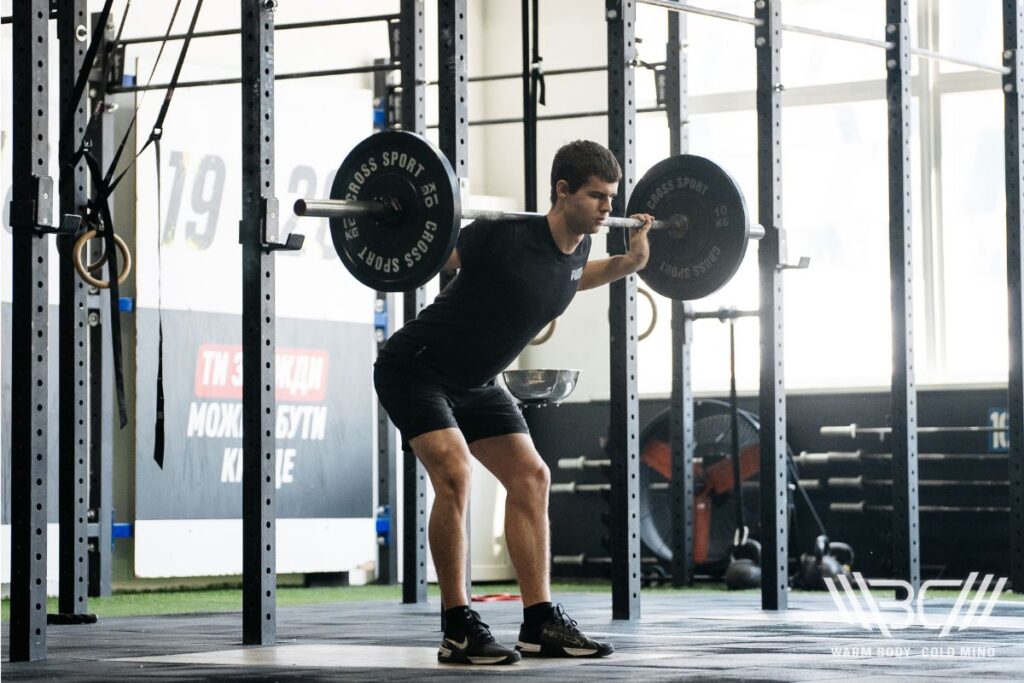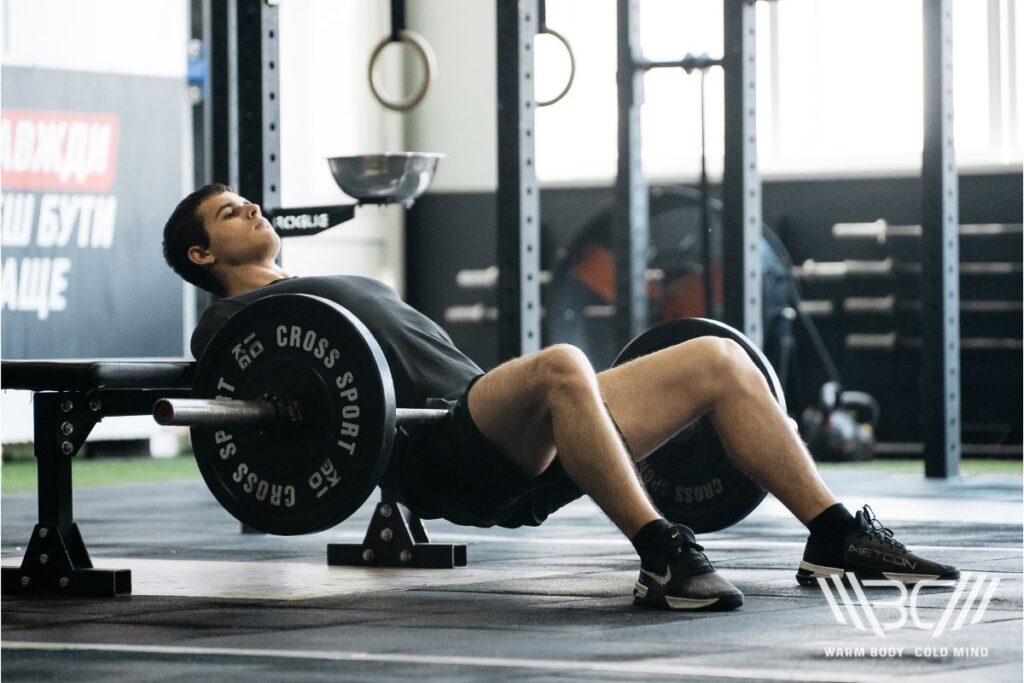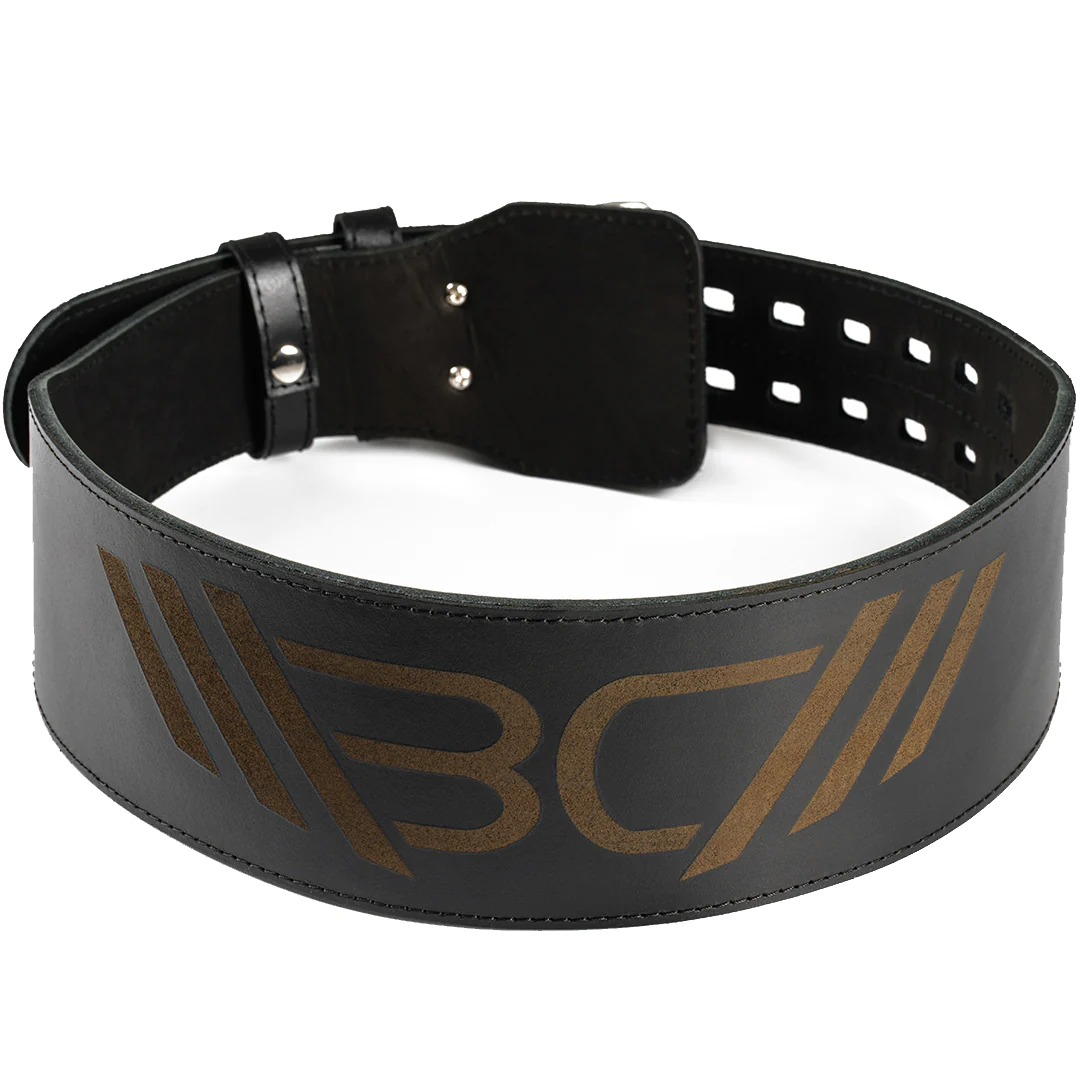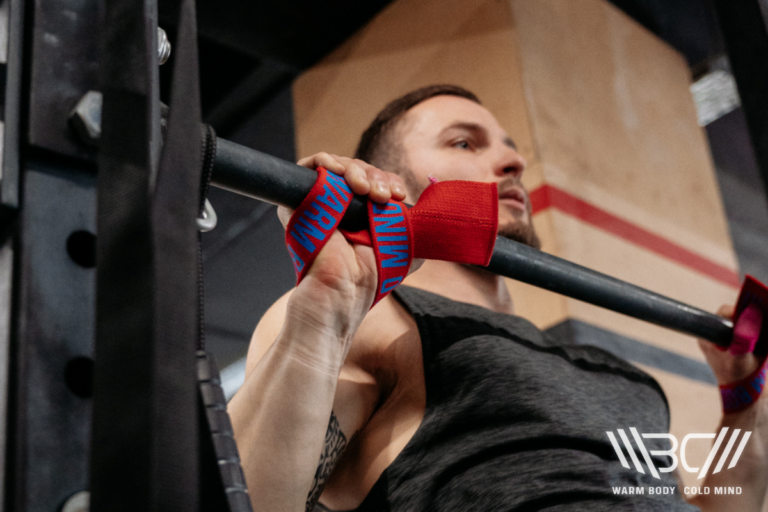5 Barbell Hamstring Exercises: Strengthen and Tone
Reviewed by Jacek Szymanowski
If you’re reading this, then you want to level up your leg game, and what better way to do that than with some quality exercises for your hamstrings (with a barbell)?
Hamstrings are important for a bunch of movements and activities, and barbell exercises are a fantastic way to specifically target and strengthen your hamstrings.
If you’re a beginner, you might feel a little intimidated, but barbells can do that to you and that’s normal. Don’t worry, we have something for everyone here, and that includes complete beginners!
Let’s work on those hamstrings and see what are the best exercises that you can utilize to get those hams nice and sturdy!
What are barbell hamstring exercises? – These are movements that target the hamstring muscles specifically and use a barbell as resistance. They help strengthen and tone the hamstrings and improve strength and stability in the lower body.
Anatomy and Role of Hamstring Muscles
No worries, we’ll get into the exercises, but first we need to cover some basics.
So, what exactly are hamstrings? They’re the muscles in the back of your thighs and they’re made up of three main muscles – biceps femoris, semitendinosus, and semimembranosus.
They play a big role in a lot of everyday movements you make, like bending the knees or extending the hips. Take running or jumping, for example – they wouldn’t be possible without hamstrings. Hamstrings also help in stabilizing the knee joint.

Each hamstring muscle has its own job. The biceps femoris is located on the outer part of your thigh and it helps with knee flexion and hip extension. The semitendinosus and semimembranosus muscles are more toward the inner part of your thigh and their main job is helping with knee flexion.
When you understand the role these muscles play, it becomes easier to prevent injuries and improve your performance.
Strengthening your hamstrings will help maintain muscle strength around the hip and knee joints, which is very important when it comes to preventing injuries (especially with athletes and people who do things that rely on explosive leg movements).
Why Barbell?
Barbells are very versatile and the reason you want to use them is because you can easily adjust the resistance you’re working with by just adding or removing plates, which means people of all fitness levels can benefit from them. They also encourage stability and balance and engage the muscles in your core and lower back.
One of the best things about barbells is that they allow you to track progressive overload very accurately, which is the foundation of any progress.
As you become stronger, you can gradually increase the amount of weight you’re lifting, and this is going to keep your muscles continually challenged, which is why they’ll develop and grow.
As far as hamstrings in particular go, take Romanian deadlifts, for example. They give you constant resistance throughout the movement and target your hamstrings to develop and grow them.
5 Barbell Hamstrings Exercises
Okay, let’s get into what you’re really here for – hamstring exercises with a barbell! And even though there are many, we will cover the five best barbell hamstring exercises out there. We’ll also add some variations and alternates so that you can mix things up if you want to.

1. Romanian Deadlifts
- Muscles Worked: hamstrings, glutes, lower back
- Variations: single-leg Romanian deadlift, dumbbell Romanian deadlift
- Alternatives: glute-ham raises, kettlebell swings
- Equipment: barbell (you can also use a lifting belt/straps for added support)
- Sets & Reps: 3-4 x 8-12
Romanian deadlifts are known for their ability to improve the strength in your posterior chain, which is important for proper posture, better athletic performance, and preventing injuries. They should strengthen your lower body and improve flexibility in the hamstrings.
If you need a little extra help with support, you can use a weightlifting belt. It can improve your lifting technique because of the support it provides to your lower back, which means it will be easier for you to maintain proper posture.

Enhance your strength training with Warm Body Cold Mind leather weightlifting belt providing exceptional support and durability.
Romanian deadlifts target your hamstrings directly by maintaining tension throughout the movement but compared to traditional deadlifts, they place less strain on your lower back and focus more on the hamstrings.
They will do wonders in terms of increasing both the mass and the strength of your hamstrings, but apart from them, Romanian deadlifts will engage your glutes and lower back, too.
If you get bored of traditional Romanian deadlifts, you can do single-leg Romanian deadlifts or even dumbbell Romanian deadlifts. Glute-ham raises and kettlebell swings will be a good alternative for those who want to target the muscles Romanian deadlifts target, but don’t want to do the actual exercise.
Here’s How to Do Romanian Deadlifts:
- Stand with your feet hip-width apart and hold a barbell in front of your thighs
- Hinge at the hips and bend your knees a little
- Lower the barbell towards the floor while keeping your back straight
- Continue lowering until you feel a stretch in your hamstrings
- Extend your hips and return to the starting position

2. Stiff Leg Deadlifts
- Muscles Worked: hamstrings, glutes, lower back
- Variations: elevated stiff leg deadlift, dumbbell stiff leg deadlift
- Alternatives: leg curls, lower back extensions
- Equipment: barbell (you can also use a lifting belt/lifting straps for added support)
- Sets & Reps: 3 x 10-15
These are ideal for isolating the hamstrings because your quads are not really involved. Stiff leg deadlifts will improve your hamstrings’ strength and your lower back as well.
They’re super effective at activating the hamstrings, and they focus on them similar to Romanian deadlifts, which we all know are superstars. Also, you may get a greater stretch than you do with Romanian deadlifts, which could lead to better muscle development.
The strength of your grip can sometimes limit the amount of weight you can lift, and if you ever experience that, a pair of lifting straps can help. They’ll make it easier for you to hold the barbell securely and they’ll distribute the load evenly, which is good for both safety and performance.

Olympic Weightlifting Straps V1
Enhance your weightlifting experience with premium Warm Body Cold Mind Olympic lifting straps.
Their main purpose is to strengthen and lengthen your hamstrings, but your glutes and lower back will be engaged, as well. Elevated stiff leg deadlifts and dumbbell stiff leg deadlifts are great variations if you want to freshen up your routine, but if you want alternatives, you can do leg curls and lower back extensions.
Here’s How You Do Them:
- Stand with your feet slightly narrower than shoulder-width apart and hold a barbell at your hips
- Keep your legs straight and hinge at the hips
- Lower the barbell down the front of your legs while keeping the back straight
- Continue lowering until you feel a stretch in your hamstrings
- Extend your hips and return to where you started from

3. Good Mornings
- Muscles Worked: hamstrings, spinal erectors, glutes
- Variations: seated good mornings, banded good mornings
- Alternatives: back extensions, deadlifts, reverse hyper
- Equipment: barbell
- Sets & Reps: 3 x 8-10
Good mornings will improve the strength of your hamstrings, glutes and spinal erectors, which will help with flexibility and stability. Having strong hamstrings and lower back is crucial for posture and any tasks that involve lifting.
The main purpose of good mornings is to strengthen your lower back and your hamstrings, and those are the muscles they mostly focus on. But they’re not the only ones – your glutes will get a lot attention, too.
If you want some alternatives to good mornings, back extensions and deadlifts are the way to go. For variations, you can do seated good mornings or banded good mornings.
Good mornings will be harder on your lower back than stiff leg deadlifts, but they’re excellent at engaging the hamstrings, particularly upper ones.
Here’s How to Do a Good Morning:
- Place a barbell on your upper back, like you would for a back squat
- Stand with feel shoulder-width apart
- Hinge at the hips and bend your knees a little
- Lower your torso until it’s almost parallel to the floor
- Slowly return to the upright position

4. Single Leg Deadlifts
- Muscles Worked: hamstrings & glutes, core
- Variations: dumbbell single-leg deadlifts, BOSU ball single-leg deadlifts
- Alternatives: single-leg cable pull-throughs, Bulgarian split squats
- Equipment: barbell (also dumbbell or BOSU ball for variation)
- Sets & Reps: 3 x 6-8 per leg
Single leg deadlifts are excellent for correcting muscle imbalances and improving balance. Not only will they strengthen your hamstrings, but they’ll also improve the stability of your core and balance. This exercise will target one of your legs at a time and focus mostly on hamstrings and glutes.
The great thing about it is that it challenges your balance in a way that’s not present in bilateral exercises, so it promotes functional fitness and engages your hamstrings while improving your balance at the same time.
Dumbbell single leg deadlifts are great variations, and as far as alternatives go, you can do single-leg cable pull-throughs and Bulgarian split squats.
Research on various deadlift styles, including a study comparing sumo and conventional deadlifts, highlights the adaptability of deadlifts in general when it comes to strengthening different muscle groups.
This Is How You Do a Single-Leg Deadlift:
- Hold a barbell in one hand and stand on the opposite leg
- Hinge at the hip and bend your knee a little
- Lower the barbell towards the ground, raising the non-standing leg behind you for balance
- Continue lowering until your torso is parallel to the ground
- Return to where you started from by extending your hip

5. Hip Thrusts
- Muscles Worked: gluteus maximus (primarily), hamstrings
- Variations: single-leg hip thrust, weighted hip thrust
- Alternatives: glute bridges, deadlift
- Equipment: barbell, bench
- Sets & Reps: 4 x 10-12
If you want to build strength and power in your glutes, you need hip thrusts. The strength that comes from your glutes will support the hamstrings so it’s important not to overlook it.
Hip thrusts provide significant activation of the gluteus maximus, and they are perfect for making your glutes and hips stronger, which will improve the power in your posterior chain and mobility in your hips.
Hip thrusts focus mostly on glutes, but they engage the hamstrings, too, just not as much as some other exercises on this list. Single-leg hip thrusts and weighted hip thrusts are great alternatives to the classic hip thrust, and glute bridges and deadlifts are fantastic alternatives.
This Is How You Do It:
- Sit on the ground in front of a bench and place a barbell over your hips
- Lean back against the bench so that your shoulder blades are near the top
- Drive through your heels to push your hips up and lift the barbell
- Pause at the top and then lower your hips back down

Barbell Hamstring Workout Example
Now you have the barbell exercises for hamstrings, but how do you combine them into a session? Easy-peasy, here’s how you do it:
- Romanian Deadlifts – 4 sets of 8-10 reps
- Stiff Leg Deadlifts – 3 sets of 10-12 reps
- Good Mornings – 3 sets of 8-10 reps
- Single Leg Deadlifts – 3 sets of 10 reps per side
Rest for about 90 seconds between the sets and make sure to recover properly, especially if you’re working with heavy weights. Oh, and don’t forget to warm up and cool down!
10 minutes of dynamic warm-up before your workout and 10 minutes of stretching after it will improve your flexibility and help your muscles prepare and then recover from the workout.
Subscribe!
Get useful tips, expert insights, and in-depth analysis of training programs & nutrition plans to get the most out of your performance.
Importance of Proper Technique
This is something that really can’t be overstated. Not only will it prevent injuries, but it will also make your workout effective so you really need to take your time to learn how to maintain proper form and exercise with the correct technique.
It can be tempting to start lifting heavy weights right away because, of course, you want results ASAP, but that will do more damage than good if you don’t have the technique down.
If you pay attention to this, you’ll engage the muscles you plan on engaging, and you’ll maintain functional integrity and joint health over time.
Form and technique is not something your trainer drills you with because they want to annoy you or look smart – it exists for a reason and you should never start lifting heavy weights if you don’t know how to do it with the correct technique.

Incorporating Barbell Hamstring Exercises On Your Leg Day
If there’s already a lot on your plate (which is usually the case with leg day), adding more to it can be complicated. But it doesn’t have to be if you follow our suggestions!
1. Volume
Think about the fitness goals in general and how frequent are your leg days. If you have a high volume session, you can squeeze in a couple of exercises that focus on your hamstrings, and you can do 3-4 sets of 8-12 reps for each close to failure.
This can be really effective for muscle growth, but make sure to check the volume to avoid doing too much work. If you’re new to this, start with a lower volume and then increase it as your strength improves.
2. Application for Specific Goal
Again – you need to think about your goals to be able to determine the intensity and exercise selection for your workouts. If you’re going after strength and power, lift heavier weights with lower reps (for example, 4-6 reps per set) and include some rest between sets to let your muscles recover.
Barbell hamstring exercises like RDLs and good mornings can be even more effective when they’re tailored to individual needs. Make sure to adjust the intensity, and if your hamstrings are a limiting factor with exercises like squats and deadlifts, try to really target them.
Whatever you choose to do, remember that you need to adjust the intensity according to your fitness level, goals and how your body responds to the workout.
Conclusion
Now you’re all set to make your hamstrings bigger and stronger! Hamstring barbell exercises will level up your leg day like you wouldn’t believe, and with so many exercises, variations, and alternatives to choose from, you’ll never get bored of them!
What does your leg day look like? Do you have a favorite hamstring exercise? If you do, care to share it with us? Which of the exercises we’ve mentioned do you think is the most effective and why?
Let’s hear what you have to say because you can never talk too much about leg day!
References:
- Barton N. Bishop, Jay Greenstein, Jena L. Etnoyer-Slaski, Heidi Sterling, Robert Topp, “Electromyographic Analysis of Gluteus Maximus, Gluteus Medius, and Tensor Fascia Latae During Therapeutic Exercises With and Without Elastic Resistance,” International Journal of Sports Physical Therapy 13, no. 4 (2018): 668-675.
- Brad J. Schoenfeld, Bret Contreras, Gul Tiryaki-Sonmez, Jacob M. Wilson, Morey J. Kolber, Mark D. Peterson, “Regional Differences in Muscle Activation During Hamstrings Exercise,” Journal of Strength and Conditioning Research 29, no. 1 (January 2015): 159-164.
- Brad J. Schoenfeld, Nicholas A. Ratamess, Mark D. Peterson, Bret Contreras, G. T. Sonmez, Brent A. Alvar, “Effects of Different Volume-Equated Resistance Training Loading Strategies on Muscular Adaptations in Well-Trained Men,” Journal of Strength and Conditioning Research 28, no. 10 (2014): 2909-2918.
- Matt J. McAllister, Kelley G. Hammond, Brian K. Schilling, Lucas C. Ferreira, Jacob P. Reed, Lawrence W. Weiss, “Muscle Activation During Various Hamstring Exercises,” Journal of Strength and Conditioning Research 28, no. 6 (2014): 1573-1580.
- Rafael F. Escamilla, Anthony C. Francisco, Andrew V. Kayes, Kevin P. Speer, Claude T. Moorman 3rd, “An Electromyographic Analysis of Sumo and Conventional Style Deadlifts,” Medicine and Science in Sports and Exercise 34, no. 4 (2002): 682-688.
- Photos by WBCM Media team; photo by @decade3d, Canva.
Author: Sergii Putsov
PhD in Sport Science, Olympic weightlifting, Strength & Conditioning coach and fitness expert
Sergii Putsov is a professional weightlifter with over 20 years of experience and multiple national medals. He was a member of the National weightlifting team, competing in the 94 kg weight class. Sergii holds a master’s degree in Olympic & Professional Sport Training and a Ph.D. in Sport Science. After his athletic career, Sergii transitioned into coaching and is now responsible for designing training programs, writing blog articles, providing live commentary for international weightlifting competitions, and hosting sport and fitness seminars worldwide.
Reviewed by: Jacek Szymanowski
Performance architect, S&C movement specialist.
Jacek Szymanowski is a highly respected sports nutrition expert with a Master’s degree in Biotechnology. His innovative approach combines lifting and fighting strategies to help athletes optimize their performance. As a Strength and Conditioning Movement Specialist, he is dedicated to reducing injuries in athletes. His specialist training in Nutrition for Athletes equips him to provide expert advice on dietary habits and nutrition for peak performance.











